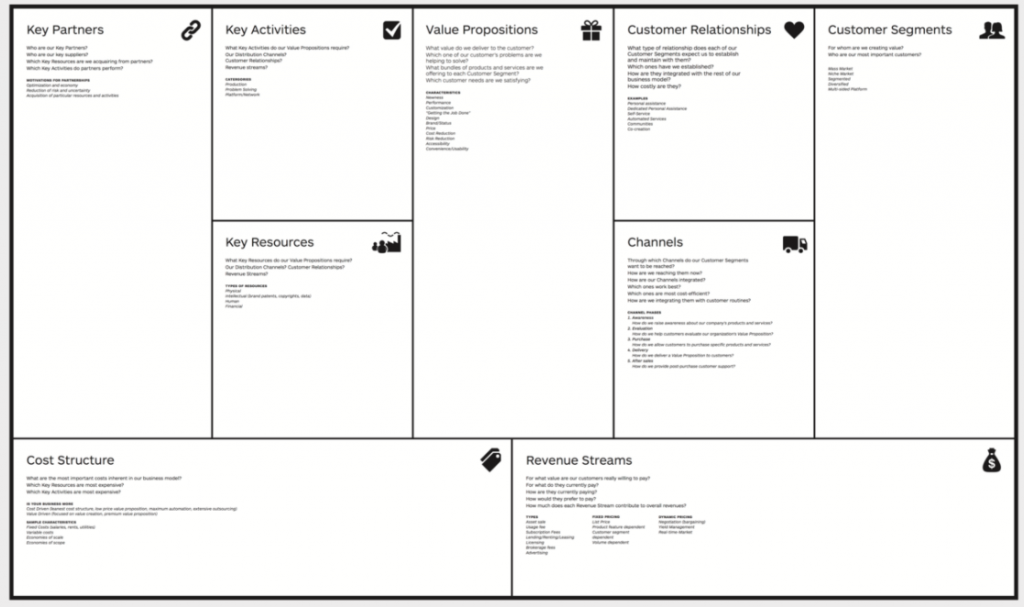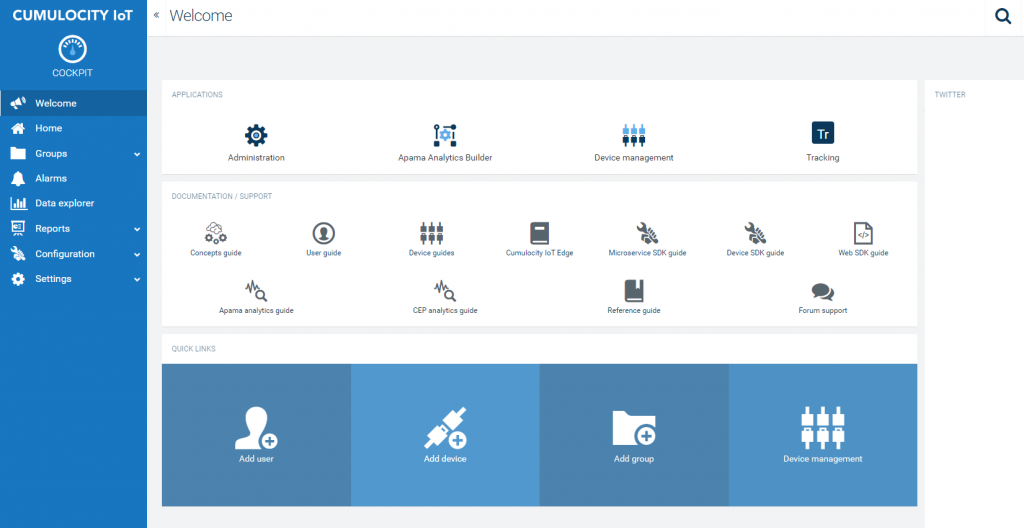Some critical tools I use to accelerate and control IoT projects.

The right tools are half the work.
I don’t know if this expression is used in all languages but I’m sure that everyone can relate to it.
In this article I’ll give some examples of tools that can help you speed up your IoT projects.
If you don’t have a project in mind then there are steps that come in front of this one to crystalize vision and mission of a project. For this article I assume that you have passed this step.
Tools for Business Scoping
In IoT you will need to make a business plan and you probably want to work as quickly as possible towards a ballpark figure for the TCO and ROI
It might not sound revolutionary but the use of a Business Model Canvas helps a lot to get everyone on the same page.
Depending on the project scope you’ll add some other models based on your core challenges. Distribution models, marketing mix, SWOT, etc.

Tools for evaluation and collaboration
Building an IoT solution is never done on an island, for several reasons. You’ll need input and engagement from all stakeholders.
This is where evaluation and collaboration tools come in.
Collaboration tools
I usually advise tools that are available and known within the company, even if they have some limitations.
These days “Teams” is often present but have worked with several ones – Slack, Trello, Asana.
My philosophy here is that you don’t want to spend too much time on it. Centralize documents, allow posts, updates questions, assign tasks, most of them can easily do that.

The evaluation tools.
I tend to put “poker planning tools” on top of the list.
This is because I really need to know what is on everyone’s mind.
I also want “issues” and “opportunities” out in the open in the beginning of a project.
Also, I want to know the team I’m working with so I need to get a picture of how someone’s mind works.
A poker planning tool is “unpredictable” for the attendee so it forces people to pay attention.
I tend to mix practical questions with more philosophical ones. Just to get a balanced view of the team I’m working with. (It’s also a good ice breaker).

IoT Scoping tool + Competence matrix
I need to know the size of a project and all the company resources available to be able to advise internally and externally on the roadmap. If you are doing a project, you will need to do the same. (Just to say that you might have the best data scientist, but if he has no time…)
IoT Scoping tool
I have used lists and forms before but recently switched to some “own” custom tools.
The reason was that a checklist gave “only me” a clear overview of the project but it ended up to be extremely long.
Consequence, no one was reading it… so in with simplification.
I created a Visio tool that bundles all the building block High level. Then it puts them in zones that define the status of an IoT building block (and its underlaying processes).
more info about IoT cornerstones
You might want to build something like this yourself or give me a shout.
The goal is that you visualize all the different interactions (from legal till functional, from hardware till data warehouse) and map all the uncertainties + undefined elements.
This will be your starting point in the project.
One overview, one full project scope with a few layers underneath brings real benefit both for keeping track of progress as for progress reporting.
As I try to work in fixed time frames (research, validation, etc.) it is crucial to keep every little element on track.

Competence matrix
Not all skills will be present inside of the company, or might not be available for the project.
Or maybe they are perfect for the pilot but not for the roll out.
A competence matrix is an “as is” skill overview. This is then mapped towards the needs of the project. What is missing needs to be added in one way or another.
As you expand the project you will add external competences of selected different stakeholders.

This often evolves towards a RACI model or becomes part of tbe BPM tool.
BPM and Business Architecture tools
Depending on the size and complexity of your project you might need additional tools to define processes and business architecture.

BPM tools
Business process modelling tools are almost crucial for mapping and end2end solution.
Especially for me as I need to understand how IoT interconnects with the organization.
Remember, I don’t speak your language (Organization DNA) and you don’t speak my language (I-IoT).
A BPM tool helps us to understand each other.
Mapping all IoT processes will not only give you an end2end insight in your solution, it will also allow you to optimise, automate and integrate.
I tend to include non-active or future processes in the BPM for evaluation. (often it is impossible to do the full scope at launch).
Which tools? I use both Visio as Aris, the first if it is a small project with few interactions, the second one if it is more complex. (or any tool that is already used by my clients).
Business Architecture
If you don’t have it yet and you are in a medium to large enterprise, then you should seriously take a look at using a business architecture tool.
It’s the best way to get a true overview of your business in a whole and specifically if you want to deploy new business models based on IoT.
I use Alfabet or ArchiMate (but as I like to stay in the same family mostly the first one).
Platform
Last but not least,
The platform is clearly a key component of your IoT solution and it’s choice probably the single most important decision to take.
- “Under-scope” the platform and you’ll spend the rest of your days trying to upgrade and fix.
- “Over-scope” the platform and you’ll struggle to get TCO and ROI in balance.
The choice of your platform is clearly dependent on your use case but even more on your internal IoT roadmap.
Silo or broader ?
You might need a vertical platform that focusses on a silo solution with all whistles and bells or it can be a more horizontal platform if your organization is eager to integrate multiple solution.
Both are valid and are often combined into a roadmap towards a data driven organization.
One of my key worries is will remain Shadow IoT.
It is important to bring value without losing control.

Other tools
Other tools might apply for of the solution design quick self service analytics but those I’ll keep for another article.
Don’t hesitate to give me feedback on this.
Kris Van der Hoeven


Recente reacties